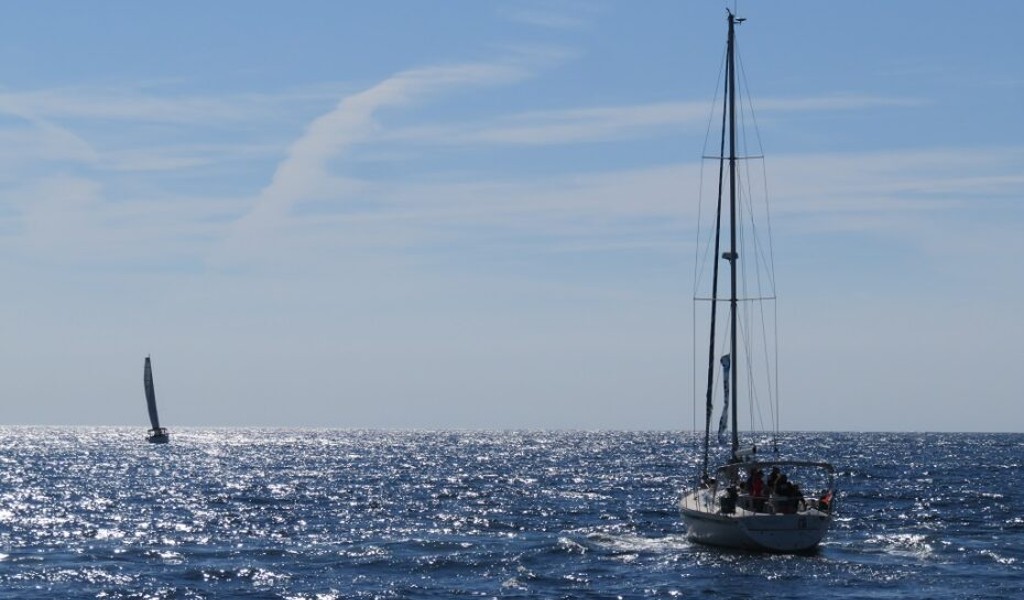
by Ramy James Salameh
For Les Sables d’Olonne sport has brought global attention to this elegant seaside town in western France. Settled on the shores of the Atlantic coast, the destination has become the world capital of single-handed ocean racing, home of the Vendée Globe and Golden Globe solo round-the-world sailing races.
The latter is described as the father of solo round-the-world events, one for the sailing purists, placing man and not machine at the heart of maritime exploration, while the equally demanding Vendée Globe uses state-of-the-art technology and equipment, but with no less guile, determination and fortitude.
A dedicated race village opens to the public at Esplanade du Vendée Globe weeks prior to the departure of both races, giving visitors and sailing fans the opportunity to see first-hand the boats, speak to the intrepid sailors and get drawn into the magnetic pull of the ocean and adventures at sea.
The busy harbour’s pontoons, jetties and watery arteries all converge at the world famous Port Olona channel. It is where sailing legends are created, as the start and end point for these most famous of sailing races.
A flotilla of boats trail in the wake of competitor boats on race departure day. All head through the iconic “Channel” connecting Port Olona’s race village to the open sea. A procession of many types of crafts bring plenty of pomp and pageantry to the occasion, which feels like a classic boat regatta. The sailors get a rapturous send-off from the thousands of people who line the channel, many with feet dangling from port walls, waving and cheering, trying to capture a moment in sporting history.
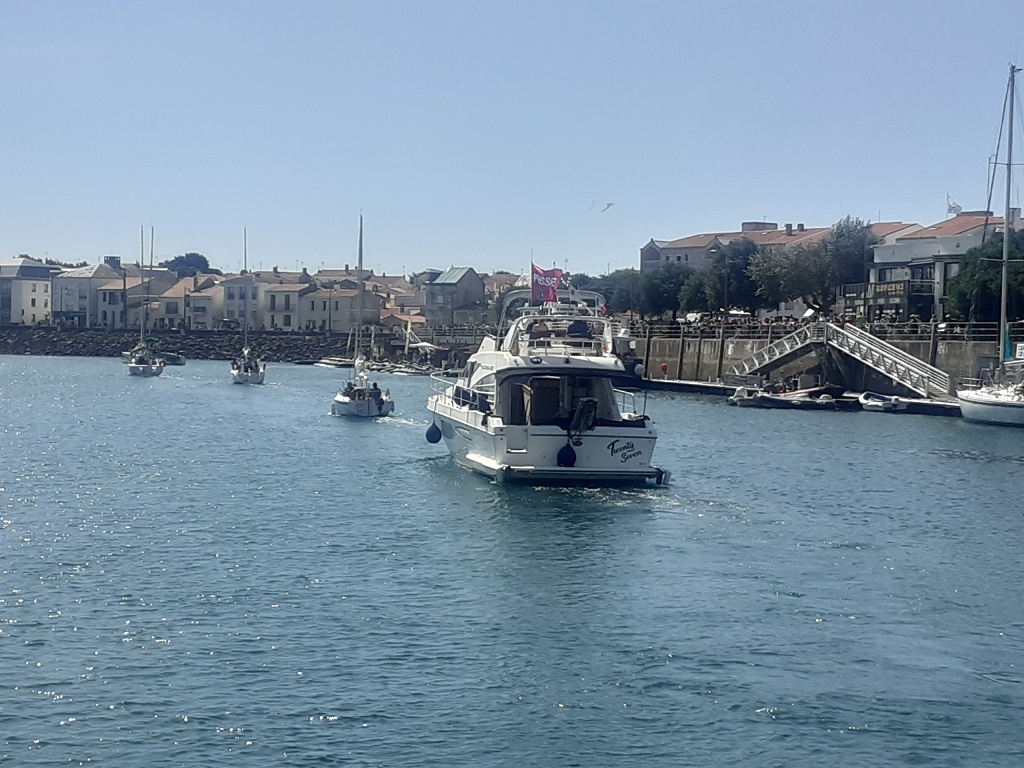
Vendée Air Show and Les Grand Plage
Les Sables d’Olonne’s support of these incredible races, not only shows the power and pull of witnessing elite sport, but has further bolstered the destination’s reputation as a haven for sports travel enthusiasts. This transcends sailing and branches out into the breath-taking natural landscape in the surrounding region.
In June 2022, the third edition of the Vendée Air Show filled the skies in front of one of Europe’s most spectacular beaches – Les Grand Plage. The sandy expanse arches around the bay and stretches for 3km. Around 120,000 spectators filled the beach and promenade to witness the aerial aerobatics of rolls, spins and loops, performed by more than 40 aircraft.
On most days the Les Grand Plage can be seen as a microcosm of Vendaen life and lifestyle and can be found in a single stroll; the beach is shared by traditionalists playing boules, walkers, runners and swimmers of all ages, many stopping to observe tribes of surfers catching waves or yoga practitioners contorting bodies creating momentary human art sculptures.
Just one street back from the elegant, south-facing bay and promenade of cafes, restaurants and boutiques, one can explore everyday life of Les Sablais, all intoxicatingly French, especially within Les Marche Halles. In 1889, architect Charles Smolski rebuilt the structure drawing inspiration from Gustave Eiffel and Victor Baltard; the elegant balustrades, Juliet balconies and over-arching canopy of cast iron and glass makes the building itself worthy of a visit, as much as the many stalls of fresh produce alongside the general hubbub of market life, that has seen trade on this site since 1810.
Les Marche Halles sits on the site of the old cemetery of Les Sables, as the building is almost within touching distance of the 17th century Notre Dame de Bon-Port Cathedral, a marvel of gothic and renaissance architecture and from which many streets converge, the ideal meeting point hence the many cafes and pâtisseries sitting at the feet of the church.
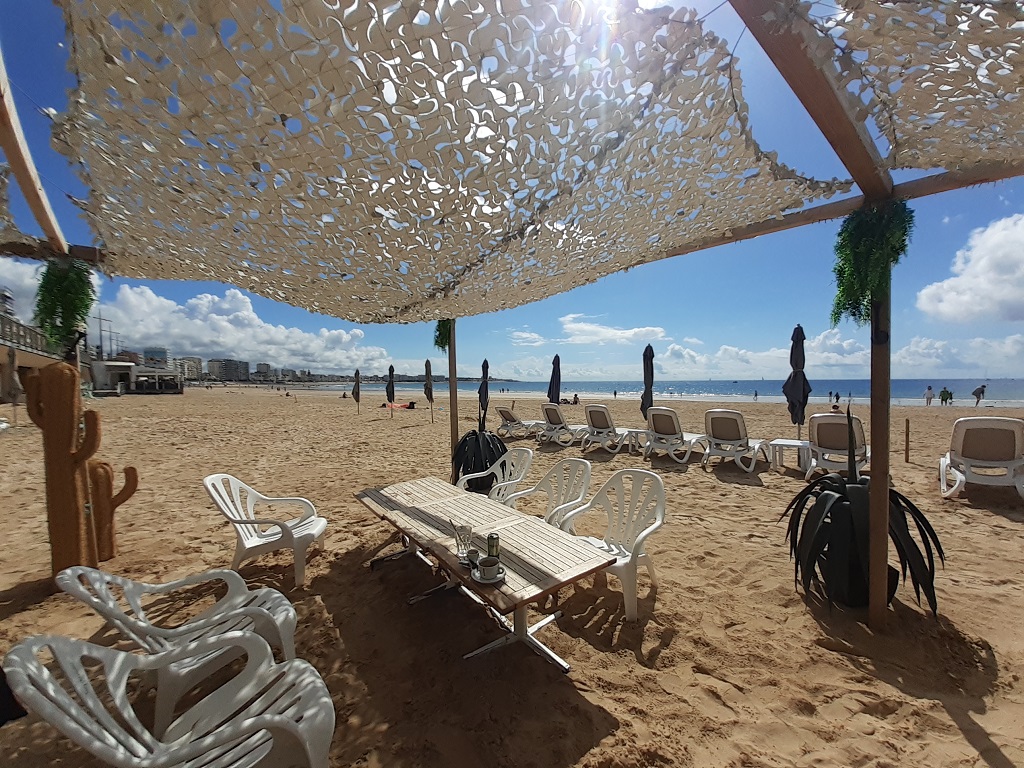
Vendée Iron Man 70.3 and active adventures
Another event in Les Sables d’Olonne’s 2022 sporting calendar was the Vendée Iron Man 70.3, another race of endurance and adaptability. Maybe out of all events that start from the town centre, Iron Man is the one where competitors get to see a larger slice of the region via a 1.9km swim, a 90km cycle race and 21km run.
The competitors initial swim starts on the beach, in front of Les Atlantes and loops around the famous lighthouse and into the historic Port Olona channel, passing an excited crowd of spectators but also Les Sables d’Olonne’s most historic monuments.
From the swim, competitors transition to bikes, which is another loop of 90km taking riders to the east of the city and into the Olonne forest. It is here that the dramatic natural scenery is unveiled and provides enough of a diverse topography to challenge entrants of Iron Man. For sports travel tourists, this beautiful landscape is easily accessible; several kilometres outside the centre of Les Sables d’Olonne, and the greater Vendée region offers some 1,800km of cycling trails.
Part of this vast network of tracks is Marais Olonne, a string of salt marshes, centred on the ancient village of salt producers Ille d’Olonne. Walkers share these narrow paths laid between the fish marsh and salt marsh, with cyclists and e-scooters, all with the same goal of taking in the diverse flora and fauna, from migratory birds to the odd group of grazing goats, unfazed by passers-by.
The flat landscape provides a sense of space, with perspective bringing into focus a solitary fisherman’s hut in the foreground and distant wind turbines sharing the panorama with the church spire of Saint Martin de Vertou. The spire was a visual landmark for which to head and belongs to Ille d’Olonne, one of many quaint villages which prompts a rest stop; especially as this tiniest of villages has a square with the grandest of names, Place Général de Gaulle.
Within the region, one is never too far away or indeed too long from interacting with the water. Another way to get even closer to nature is by paddle-board, an almost zen-like experience, eliciting pure calm, with the only noise coming from the paddle entering the water or the watery landing of an egret. The patchwork of marsh canals was a welcome antidote to the nervous energy of the race village, and the constant flow of boats manoeuvring expertly into one of 1,500 berths that Port Olona provides its sailing community.
The Iron Man race finale is the “run”, which comprises of two circuits to reach the 21.1km distance of the course, which takes in a section of the Les Grand Plage, before joining Le Remblai (promenade) and being able to admire many architectural styles including some magnificent villas from the 19th century. Runners continue in the direction of Tanchet Lake, a popular area for walkers and anglers. The finish line then comes into view, as competitors return to the town centre.
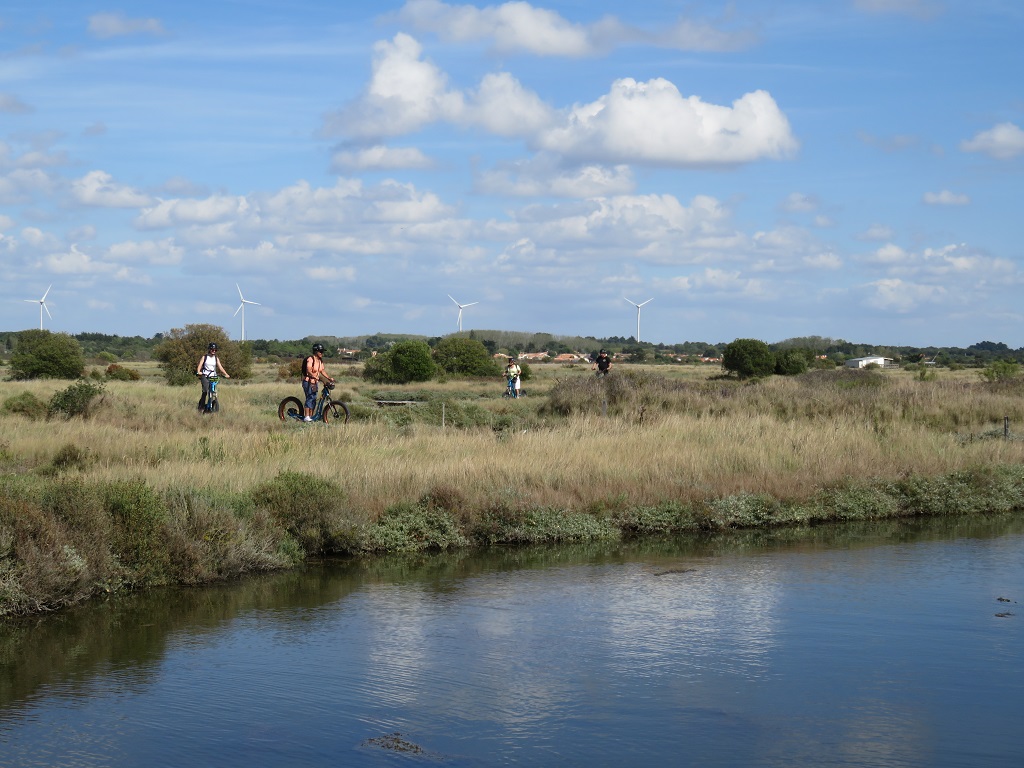
La Chaume: Fisherman’s Quarter
Outside of race or festival days is the right moment to explore La Chaume and the deep maritime heritage of the fisherman’s quarter. Walk into the small cafés set back from the water’s edge, hidden within the narrow streets of lime-washed cottages, to find walls bedecked with black, white and sepia postcards of a bygone era and nautical ephemera. The postcards depict the old harbour, the fisherman, their wives and families bringing home their catch of cod, sardine and tuna fish.
It is on this side of the channel that other landmarks point to the earlier trades of salt, wine, wheat and sailcloth all still relevant in some way today. The 11th century Priory of Saint Nicolas was built by the monks of Sainte Croix de Talmont and has seen many reincarnations, today it is an exhibition venue. The Tower of Arundel was built in the 15th century forming part of Chateau St. Clair’s defences, now incorporating the Sea Museum. These are the first monuments every sailor departing and entering the mouth of the harbour are comforted by seeing.
It was these historic buildings, that every skipper of the flotilla of boats accompanying the departure of the Vendée Globe and Golden Globe Race competitors, position their vessel towards. It is easy to imagine how emotional it must be and the sense of homecoming many centuries of sailors have felt to see these landmarks come into view; especially skippers from these epic sailing races that, where sailors spend so long at sea and overcome so much.
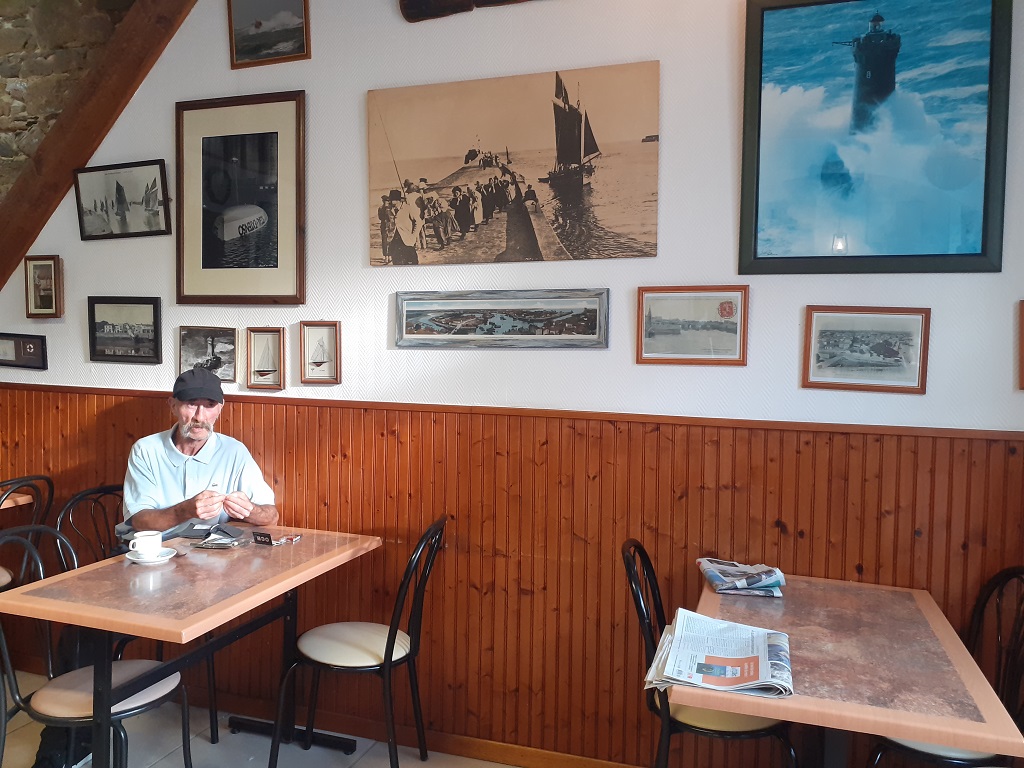
Homecoming
Les Sables d’Olonne has used its maritime history as a means to develop its maritime future by being the transition point for the world’s most important solo sailing races and as importantly shining a light on the Côte de Lumière. Sport and active adventure is now part of the fabric of this spectacular town that respects its heritage, but is adding new chapters into the historic annals via these unique nautical events.
Numerous skippers have departed on their voyage “which human values and surpassing oneself are essential in order to face the elements and reach the end of the adventure”, said Yannick Moreau, mayor of Les Sables d’Olonne.
These sailors certainly dream of their return to Les Sables-d’Olonne and let’s hope we are all back to witness their homecoming.
For more information see lessablesdolonne-tourisme.com, vendee-tourism.co.uk and admiralhotel.fr
